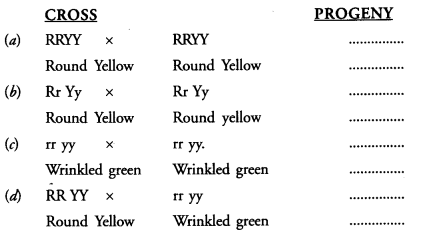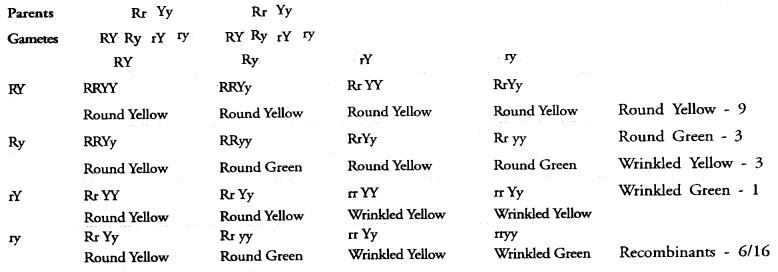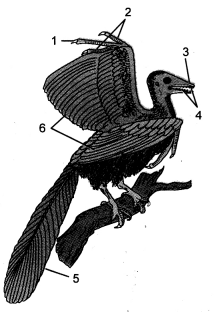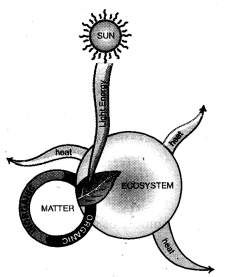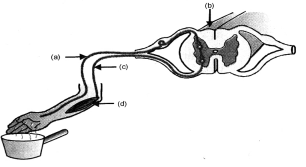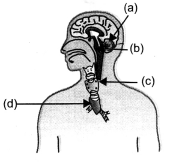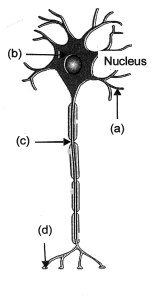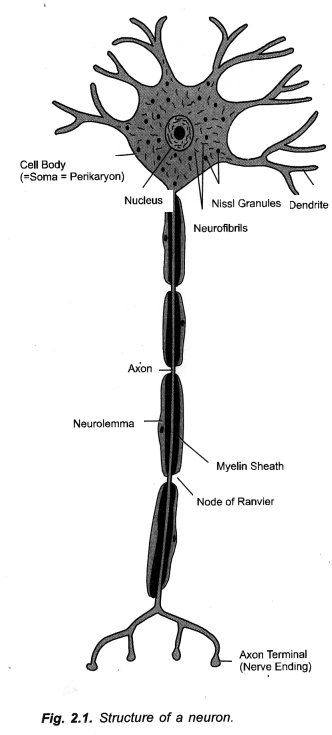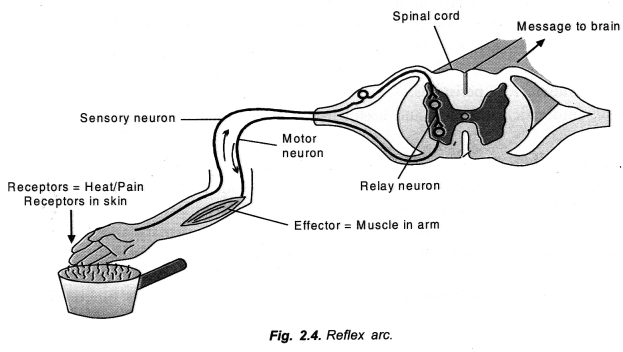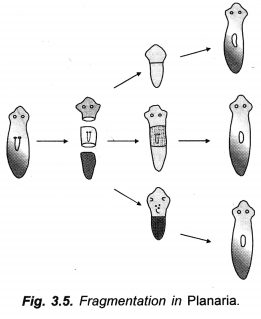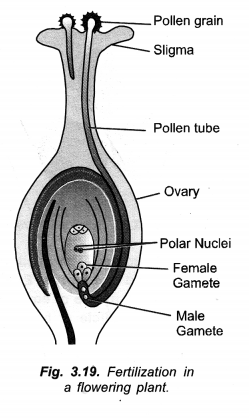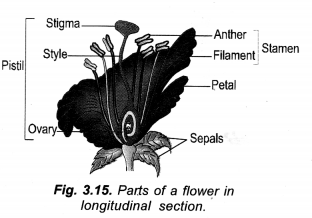CBSE Sample Papers for Class 10 Maths Paper 3 is part of CBSE Sample Papers for Class 10 Maths . Here we have given CBSE Sample Papers for Class 10 Maths Paper 3. According to new CBSE Exam Pattern, MCQ Questions for Class 10 Maths Carries 20 Marks.
CBSE Sample Papers for Class 10 Maths Paper 3
| Board | CBSE |
| Class | X |
| Subject | Maths |
| Sample Paper Set | Paper 3 |
| Category | CBSE Sample Papers |
Students who are going to appear for CBSE Class 10 Examinations are advised to practice the CBSE sample papers given here which is designed as per the latest Syllabus and marking scheme as prescribed by the CBSE is given here. Paper 3 of Solved CBSE Sample Papers for Class 10 Maths is given below with free PDF download solutions.
Time: 3 Hours
Maximum Marks: 80
GENERAL INSTRUCTIONS:
- All questions are compulsory.
- This question paper consists of 30 questions divided into four sections A, B, C and D.
- Section A comprises of 6 questions of 1 mark each, Section B comprises of 6 questions of 2 marks each, Section C comprises of 10 questions of 3 marks each and Section D comprises of 8 questions 1 of 4 marks each.
- There is no overall choice. However, internal choice has been provided in one question of 2 marks, 1 three questions of 3 marks each and two questions of 4 marks each. You have to attempt only one of the alternatives in all such questions.
- In question of construction, drawings shall be neat and exactly as per the given measurements.
- Use of calculators is not permitted. However, you may ask for mathematical tables.
SECTION A
Question numbers 1 to 6 carry 1 mark each.
Question 1.
Write the polynomial whose zeroes are 2 + √3 and 2 – √3.
Question 2.
If the quadratic equation px² – 2√5 px + 15 = 0 has two equal real roots, then find the value of p.
Question 3.
Which term of the arithmetic progression 4, 9, 14, 19……is 109?
Question 4.
Explain, why 17 x 5 x 11 x 3 x 2 + 2 x 11 is a composite number?
Question 5.
If the adjoining figure is a sector of a circle of radius 10.5 cm, find the perimeter of the sector. [Take π=\(\frac { 22 }{ 7 }\)]

Question 6
Find the value of a, if the distance between the points A(-3, -14) and B (a, -5) is 9 units.
SECTION B
Question numbers 7 to 12 carry 2 marks each.
Question 7. Show that any positive odd integer is of the form 4q + 1 or 4q + 3, where q is some integer.
Question 8.
The coordinates of the mid-point of the line joining the points (3p, 4) and (-2, 2q) are (5, p). Find the values of p and q.
Question 9.
If the total surface area of a solid hemisphere is 462 cm², find its volume.[Take π=\(\frac { 22 }{ 7 }\)]
Question 10.
If 4 cos θ = 11 sin θ, find the value of
![]()
Question 11.
In an equilateral triangle ABC, AD is drawn perpendicular to BC meeting BC in D. Prove that AD² = 3BD².
Question 12.
The incircle of an isosceles triangle ABC, in which AB = AC, touches the sides BC, CA and AB at D, E and F respectively. Prove that BD = DC.
SECTION C
Question numbers 13 to 22 carry 3 marks each.
Question 13.
Find the largest number that divides 2053 and 967 and leaves a remainder of 5 and 7 respectively.
Question 14.
Solve graphically the pair of linear equations 2x + 3y = 11 and 2x – 4y = – 24. Hence, find the value of m, given that the line represented by y = mx + 3 passes through the intersection of the given pair.
Question 15.
Find the value of k for which the following pair of linear equations has no solution : x + 2y = 3; (k – 1)x + (k + 1)y = (k + 2).
Question 16.
Find the sum of all two digit numbers which when divided by 3 yield 1 as remainder.
OR
The sum of 4th and 8th terms of an AP is 24 and the sum of 6th and 10th terms is 44. Find the AP.
Question 17.
Find the mean of the following frequency distribution :

Question 18.
Find the area of the quadrilateral whose vertices taken in order are A(-5, -3), B(-4, -6), C(2, -1) and D(1, 2).
OR
Prove that the points A(2, 3), B(-2, 2), C(-1, -2) and D(3, -1) are the vertices of a square ABCD.
Question 19.
Draw a line segment of length 7.8 cm and divide it in the ratio 5 : 8. Measure the two parts. Also, justify your construction.
Question 20.
Prove the following identities:

OR
Prove that \((cosec A – sin A) (sec A – cos A) =\frac { 1 }{ tanA+cotA }\)
Question 21.
In ∆PQR, right angled at Q, PQ = 5 cm and PR + QR = 25 cm. Find the values of sin P, cos P and tan P.
Question 22.
A toy is in the form of a cone of base radius 3.5 cm mounted on a hemisphere of base diameter 7 cm. If the total height of the toy is 15.5 cm, find the total surface area of the toy.
OR
A hemispherical bowl of internal diameter 36 cm contains liquid. This liquid is filled into 72 cylindrical bottles of diameter 6 cm. Find the height of each bottle, if 10% liquid is wasted in this transfer.
SECTION D
Question numbers 23 to 30 carry 4 marks each.
Question 23.
Ram’s mother has given him money to buy some boxes from the market at the rate of 4x² + 3x – 2. The total amount of money given by his mother is represented by 8x4 + 14x3 – 2x2 + 7x – 8. Out of this money he donated some amount of money to a child who was studying in the light of street lamp. Find how much amount of money he donated after purchasing the maximum number of boxes from the market? Write the values shown by Ram.
Question 24.
A student scored a total of 32 marks in class tests in mathematics and science. Had he scored 2 marks less in science and 4 more in mathematics, the product of his marks would have been 253. Find his marks in two subjects.
OR
If -4 is a root of the equation x² + 2x + 4p = 0, find the values of k for which the equation x² + p(1 + 3k)x + 7(3 + 2k) = 0 has equal roots.
Question 25.
Through the mid-point M of the side CD of a parallelogram ABCD, the line BM is drawn intersecting AC at L and AD produced in E. Prove that EL = 2BL.
OR
In a ∆PQR, N is a point on PR such that QN ⊥ PR. If PN x NR = QN², prove that ∠PQR = 90°.
Question 26.
In the adjoining figure, O is the centre of a circle of radius 5 cm. T is a point such that OT = 13 cm, PT and QT are tangents to the circle at points P and Q respectively. OT intersects the circle at the point E. If AB is tangent to the circle at E, find the length of AB.

Question 27.
A vertical tower stands on a horizontal plane and is surmounted by a vertical flag staff of height h. At a point on the plane, the angles of elevation of the bottom and the top of the flagstaff are α and β respectively. Prove that the height of the tower is \(\frac { h\quad tan\alpha }{ tan\beta -tan\alpha } \)
Question 28.
PS is a diameter of a circle of radius 6 cm. Q and R are points on the diameter that PQ, QR and RS are equal. Semicircles are drawn with PQ and QS as diameters, as shown in the figure. Find the perimeter of the shaded region.
Also find the area of the shaded region. (Use π = 3.14)

Question 29.
A die has six faces marked 0, 1, 1, 1, 6, 6. Two such dice are thrown together and the total score is recorded.
(i) How many different scores are possible?
(ii) What is the probability of getting a total of 7?
OR
Two customers Shyam and Ekta visit a particular shop in the same week from Tuesday to Saturday. Each is equally likely to visit the shop on any day. Find the probability that they visit the shop
(i) on the same day
(ii) on consecutive day
(iii) on different days
(iv) neither on same day nor on consecutive days.
Question 30.
The following distribution gives the daily wages of 50 workers of a factory:

Convert the distribution to a less than type cumulative frequency distribution, and draw its ogive. Hence, obtain the median wages from the graph.
Answers
Answer 1.
Required polynomial = x² – (Sum of the zeroes) x + Product of the zeroes
= x² – (2 + √3 + 2 – √3)x + (2 + √3)(2 – √3)
= x² – 4x + 1.
Answer 2.
Given px² – 2√5 px + 15 = 0
For equal roots, D = (-2√5 p)² – 4 x p x 15 = 0
=> 20p² – 60p = 0 => 20p(p – 3) = 0
=> p = 0 or p = 3 but p ≠ 0 => p = 3.
Answer 3.
Given 4, 9, 14, 19 … 109
Here, a = 4, d = 5, l = 109
Now, l = a + (n – 1)d
109 = 4 + (n – 1) x 5 => 5(n – 1) = 105 => n – 1 = 21 => n = 22.
Hence, 22nd term is 109.
Answer 4.
Given number = 17 x 5 x 11 x 3 x 2 + 2 x 11 = 11 x 2 x (17 x 5 x 3 + 1)
which is product of more than one prime number, therefore, the given number is prime.
Answer 5.
Radius = 10.5 cm = \(\frac { 21 }{ 2 }\) cm
![]()
Perimeter = AC + BC + AB = (10.5 + 10.5 + 11) cm = 32 cm.
Answer 6.
AB = 9

Answer 7.
Let a be any positive odd integer.
Applying Euclid’s division lemma with divisor 4, we get
a = 4q, 4q + 1, 4q + 2 or 4q + 3 where q is some whole number.
But 4q and 4q + 2 are even integers and a is odd integer, therefore, a cannot be of the form 4q or 4q + 2.
Hence, a is of the form 4q + 1 or 4q + 3, where q is some whole number.
Answer 8.
The mid-point of the line segment joining the points (3p, 4) and (-2, 2q) is

and 2 + q = p => 2 + q = 4 => q = 2.
Hence, p = 4 and q = 2.
Answer 9.
Given, total surface area of hemisphere = 462 cm²
=> 3πr² = 462

Answer 10.
Given 4 cos θ = 11 sin θ
⇒\(\frac { sin\theta }{ cos\theta } =\frac { 4 }{ 11 } \) ….(i)

Answer 11.
In ∆ABD right angled at D.
By Pythagoras theorem,
AB² = AD² + BD²
=> BC² = AD² + BD² (∵ AB = BC = CA)
=> (2BD)² = AD² + BD²
(∵in an equilateral ∆ perpendicular is the median , ∴\(BD=\frac { 1 }{ 2 }BC\))
=> 4BD² = AD² + BD²
=> AD² = 3BD²

Answer 12.
Given: A circle inscribed in an isosceles ∆ABC with AB = AC, touching the sides BC, CA and AB at D, E and F respectively.
To prove: BD = DC
Proof: ∵ Length of tangents from an external point to the circle are equal

∴ AF = AE …(i)
BF = BD …(ii)
and CD = CE …(iii)
∴ AB = AC
=> AF + BF = AE + EC
=> BF = EC (using (i))
=> BD = CD (using (ii) and.(iii))
Answer 13.
Given that required number when divides 2053 and 967 leaves a remainder 5 and 7 respectively.
∴ The required number is HCF of 2053 – 5 = 2048 and 967 – 7 = 960

∴HCF of 2048 and 960 = 64
Hence, the required largest number is 64.
Answer 14.
The given equations can be written as

The given lines intersect at the point P(-2, 5). Therefore, the solution of the given pair of linear equation is x = -2, y = 5.
Given that the line y = mx + 3 passes through the intersection of the given pair i.e. (-2, 5)
∴5 = m x (-2) + 3 => -2m – 2 => m = -1.
Answer 15.
The given pair of linear equations can be written as
x + 2y – 3 = 0 and (k – 1)x + (k + 1)y – (k + 2) = 0
Here, a1 = 1,b1 = 2, c1 = -3 and a2 = k – 1, b2 = k + 1, c2 = -(k + 2).
Now, the given pair of linear equations has no solution, if
![]()
=> 2k – 2 = k + 1 and 2k + 4 ≠ 3k + 3
=> k = 3 and k ≠ 1.
Hence, the given pair of linear equations will have no solution when k = 3.
Answer 16.
Two digit numbers which leaves remainder 1 when divided by 3 are 10, 13, 16, 19 …, 97.
These numbers form an AP with a = 10, d = 3 and l = 97.
∵ l = a + (n – 1 )d
=> 97 = 10 + (n – 1) x 3 => 3(n – 1) = 87 => n – 1 = 29
=> n = 30
Now, the sum of all such numbers

= 15 x 107 = 1605.
Hence, the required sum is 1605.
OR
Let the first term and common difference of AP be a and d respectively.
Given: T4 + T8 = 24 and T6 + T10 = 44
=> a + 3d + a + 7d = 24 and a + 5d + a + 9d = 44
=> 2a + 10d = 24 …(i)
and 2a + 14d = 44 …(ii)
Subtracting (i) from (ii), we get
4d = 20 => d = 5.
Putting d = 5 in (i), we get
2a + 10 x 5 = 24
=> 2a = -26 => a = -13.
Hence, the required AP is
-13, -13 + 5, -13 + 2 x 5, -13 + 3 x 5, ……
i.e. -13, -8, -3, 2, …
Answer 17.
We shall use step-deviation method. Taking assumed mean a = 25, construct the table as under. Here, h = 10.

Answer 18.
Join AC.
Now,

∵AB = BC = CD = DA i.e. all 4 sides are equal
and AC = BD i.e. diagonals are equal.
∴ ABCD is a square.
Answer 19.
Steps of construction:
1. Draw a line segment AB of length 7.8 cm by using ruler.
2. Draw any ray AX making an acute angle with AB.
3. Locate 13 (5 + 8) points, A1, A2, A3, …, A13 on AX such that AA1 = A1A2 = A2A3 = …… = A12A13.
4. Join A13B.
5. Through A5, draw a line parallel to A13B (making an angle equal to ∠AA13B) to intersect AB at C. Then C is the required point which divides AB in the ratio 5 : 8.
On measuring, we find that AC = 3 cm and CB = 4.8 cm.


Answer 20.

Answer 21.
Given PR + QR = 25 cm => QR = (25 – PR) cm.
In ∆PQR, ∠Q = 90°. By Pythagoras Theorem,
PR² = PQ² + QR²
=> PR² = 5² + (25 – PR)²
=> PR² = 25 + 625 – 50 PR + PR²
=> 50 PR = 650 => PR = 13 cm
∴ QR = (25 – 13) cm = 12 cm.


Answer 22.
Given radius of cone = 3.5 cm
Diameter of hemisphere = 7 cm


Answer 23.
Total amount of money p(x) = 8x4 + 14x3 – 2x2 + 7x – 8.
Cost of each box g(x) = 4x2 + 3x – 2
Maximum number of boxes purchased = q(x)
Amount of money donated to the child = r(x)
We need to find q(x) and r(x).
On dividing p(x) by g(x), we have

Hence, the amount of money he donated to the child = 14x – 10
and maximum number of boxes, he purchased = 2x2 + 2x – 1.
The values shown by Ram are kindness, helpfulness, well wisher of society, care for children and promoting education.
Answer 24.
Let the student’s marks in mathematics be x.
As the total marks in mathematics and science is 32,
so the student’s marks in science = 32 – x.
Given if he scores 2 less marks in science and 4 more marks in mathematics, then his new marks in science = 32 – x – 2 = 30 – x
and his new marks in mathematics = x + 4.
According to given, (x + 4) (30 – x) = 253
=> 30x + 120 – x² – 4x = 253
=> x² – 26x + 133 = 0
=> x² – 19x – 7x + 133 = 0
=> (x – 7) (x – 19) = 0 => x = 7 or x = 19.
When x = 7, 32 – x = 25; when x = 19, 32 – x = 13.
Hence, student’s marks in mathematics = 7 and in science 25
or student’s marks in mathematics = 19 and in science = 13.
OR
Given x = -4 is a root of the equation x² + 2x + 4p = 0
(-4)² + 2 x (-4) + 4p = 0
=> 16 – 8 + 4p = 0 => 4p = -8 => p = -2.
Now, the equation x² + p(1 + 3k)x + 7(3 + 2k) = 0 has equal roots
D = 0 => {p( 1 + 3k)}² – 4 x 1 x 7(3 + 2k) = 0
=> p²(1 + 6k + 9k²) – 28(3 + 2k) = 0
=> (-2)² (1 + 6k + 9k²) – 84 – 56k = 0 (∵ p = -2)
=> 4 + 24k + 36k² – 84 – 56k = 0
=> 36k² – 32k – 80 = 0
=> 9k² – 8k – 20 = 0
=> (9k + 10) (k – 2) = 0
=> \(k=-\frac { 10 }{ 9 }\) or k = 2.
Answer 25.
In ∆BMC and ∆EMD,

MC = MD (∵ M is mid-point of CD)
∠CBM = ∠DEM (alt. ∠s, BC || AE)
∠BMC = ∠EMD (vert. opp. ∠s)
∴ ∆BMC ≅ ∆EMD (AAS criterion of congruence)
=> BC = DE (c.p.c.t.)
Also AD = BC (opp sides of ||gm ABCD)
∴ AE = AD + DE = BC + BC => AE = 2BC …(i)
In AAEL and ACBL,
∠AEL = ∠CBL
∠ALE = ∠CLB
∴ ∆AEL ~ ∆CBL

Answer 26.
Since tangent is perpendicular to radius, OP ⊥ PT.
In ∆OPT, ∠OPT = 90°. By Pythagoras theorem,
PT² = OA² – OP² = 13² – 5² = 144 => PT = 12 cm
As the lengths of tangent drawn from a point to a circle are equal,
AP = AE = x cm (say)
=> AT = PT – AP = (12 – x) cm
ET = OT – OE = 13 cm – 5 cm = 8 cm.
Given, AB is tangent to the circle at E, OE ⊥ AB => ∠AET = 90°.
In ∆AET, ∠AET = 90°. By Pythagoras theorem,
AT² = AE² + ET² => (12 – x)² = x² + 8²
=> 144 – 24x + x² = x² + 64

Answer 27.
Let AB be a vertical tower and BP be a flagstaff of height h surmounted on the tower AB, and O be the point of observation on the plane
(ground), then BP = h.
Let OA = d and AB = H.
Given, ∠BOA = α and ∠POA = β.


Answer 28.
PS = 2 x radius = (2×6) cm = 12 cm.
Given PQ = QR = RS
=> PQ = \(\frac { 1 }{ 3 }\) of PS = \(\frac { 1 }{ 3 }\) of 12 cm = 4 cm
and QS = 8 cm.

Answer 29.
(i) For the sum of outcomes on the top faces of two dice i.e. the total score obtained, we construct the table as under:

The different scores obtained are 0, 1, 2, 6, 7, 12. They are six in number.
Hence, the number of different possible scores are 6 (in number).
(ii) Total number of outcomes are 6×6 i.e. 36, which are all equally likely.
The table shows that we get score 7 twelve times.
So, the number of outcomes favourable to the event ‘getting a total of 7’ is 12.
∴ P(getting a total of 7) = \(\frac { 12 }{ 36 } =\frac { 1 }{ 3 } \)
OR
Let T, W, Th, F and S represent Tuesday, Wednesday, Thursday, Friday and Saturday respectively. Since Shyam and Ekta visit a particular shop in the same week from Tuesday to Saturday, the outcomes are:
(T, T), (T, W), (T, Th), (T, F), (T, S)
(W, T), (W, W), (W, Th), (W, F), (W, S)
(Th, T), (Th, W), (Th, Th), (Th, F), (Th, S)
(F, T), (F, W), (F, Th), (F, F), (F, S)
(S, T), (S, W), (S, Th), (S, F), (S, S)
Total number of outcomes = 5 x 5 = 25 and all outcomes are equally likely.
(i) The outcomes favourable to the event ‘visit on the same day’ are (T, T), (W, W), (Th, Th), (F, F), (S, S); which are 5 in number.
∴ P (visit on the same day) = \(\frac { 5 }{ 25 } =\frac { 1 }{ 5 } \)
(ii) The outcomes favourable to the event ‘visit on consecutive days’ are (T, W), (W, T), (W, Th), (Th, W), (Th, F), (F, Th), (F, S), (S, F); which are 8 in number.
∴ P (visit on consecutive days) = \(\frac { 8 }{ 25 }\).
(iii) P (visit on different days) = 1 – P (visit on same day)
= \(1-\frac { 1 }{ 5 } =\frac { 4 }{ 5 } \)
(iv) The outcomes favourable to the event ‘visit neither on same day nor on consecutive days’ are (T, Th), (T, F), (T, S), (W, F), (W, S), (Th, T), (Th, S), (F, T), (F, W), (S, T), (S, W), (S, Th); which are 12 in number.
∴P (visit neither on same day nor on consecutive days) = \(\frac { 12 }{ 25 }\)
Answer 30.
From the given data, we construct the table for cumulative frequency distribution as under:

Take 1 cm along x-axis = Rs 20 and 1 cm along y-axis = 10 workers.
Plot the points (120, 12), (140, 26), (160, 34), (180, 40), (200, 50) and (100, 0). Join these points by a free hand drawing. The required ogive (less than type) is drawn on the graph sheet given below.

Since the scale on x-axis starts at 100, a kink (break) is shown on the x-axis near the origin.
To find median:
Let A be the point on y-axis representing frequency = \(\frac { n }{ 2 } =\frac { 50 }{ 2 } \) = 25.
Through A, draw a horizontal line to meet the ogive at P. Through ,P, draw a vertical line to meet the x-axis at M. The abscissa of the point M represents 138.5
Hence, the median daily wages = Rs 138.50
We hope the CBSE Sample Papers for Class 10 Maths Paper 3 help you. If you have any query regarding CBSE Sample Papers for Class 10 Maths Paper 3, drop a comment below and we will get back to you at the earliest.














































































